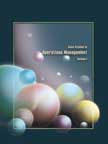Mass Customization: The BMW Way
|
|
ICMR HOME | Case Studies Collection
Case Details:
Case Code : OPER051
Case Length : 12 Pages
Period : 1990-05
Organization : BMW Group
Pub Date : 2005
Teaching Note : Available
Countries : Germany
Industry : Automobile
To download Mass Customization: The BMW Way case study
(Case Code: OPER051) click on the button below, and select the case from the list of available cases:

Price:
For delivery in electronic format: Rs. 300;
For delivery through courier (within India): Rs. 300 +Shipping & Handling Charges extra
» Operations Case Studies
» Case Studies Collection
» ICMR HOME
» View Detailed Pricing Info
» How To Order This Case
» Business Case Studies
» Case Studies by Area
» Case Studies by Industry
» Case Studies by Company 
Please note:
This case study was compiled from published sources, and is intended to be used as a basis for class discussion. It is not intended to illustrate either effective or ineffective handling of a management situation. Nor is it a primary information source.
Chat with us

Please leave your feedback

|
|




<< Previous
Background
|
BMW's history can be traced back to 1913, when Karl Friedrich Rapp (Rapp)
established the Rapp-Motorenwerke to manufacture aircraft engines in the Munich
district of Germany. In 1916, while the First World War was on, the company
secured a contract to manufacture aircraft engines for the Austria-Hungarian
army. Rapp needed additional financing to honor this contract. To meet this
need, he entered into a partnership with Camillo Castiglioni and Max Friz in
1917. The new partnership company was named Bayerische Motoren Werke GmbH.
However, the company soon ran into difficulties because of over-expansion and
the partners had it to sell to Austrian industrialist, Franz Josef Popp, in
1917.
|

|
In 1918, Bayerische Motoren Werke manufactured its first aircraft engine, the
Type IIIa, which powered a biplane to reach an altitude of 5000 meters in 29
minutes, creating a world record. After the First World War, the Treaty of
Versailles (1919) banned Germany from producing aircraft. Therefore, the
company had to shift to manufacturing railway brakes. In 1922, Bayerische
Flugzeugwerke AG, another company from the Munich region that manufactured
small aircraft, was merged with the Bayerische Motoren Werke to form BMW AG.
|
|
BMW started manufacturing motorcycles in 1923 and the company's first model
the R32 was launched in the same year. It was a 500cc shaft-driven cycle
designed by Max Friz. BMW continued manufacturing motorcycle models until
the company's foray into car manufacture in the late 1920s.
In 1928, BMW bought a car manufacturing unit in the Eisenach region of
Germany. Along with the unit, the company acquired the rights to manufacture
a small car called 'Dixi' which was based on the Austin Seven car4. This was
BMW's first car and was marketed under the name BMW 3/15. |
By the early 1930s, BMW had begun designing and manufacturing
its own cars, and by the late 1930s, had introduced several successful models.
The company's 327 saloon and 328 roadster were considered very advanced at that
time (the roadster especially was the most successful sports car of its time and
was even nominated as the Car of the Century in 1999 by a panel of auto
experts)...
Excerpts >>
|
|










